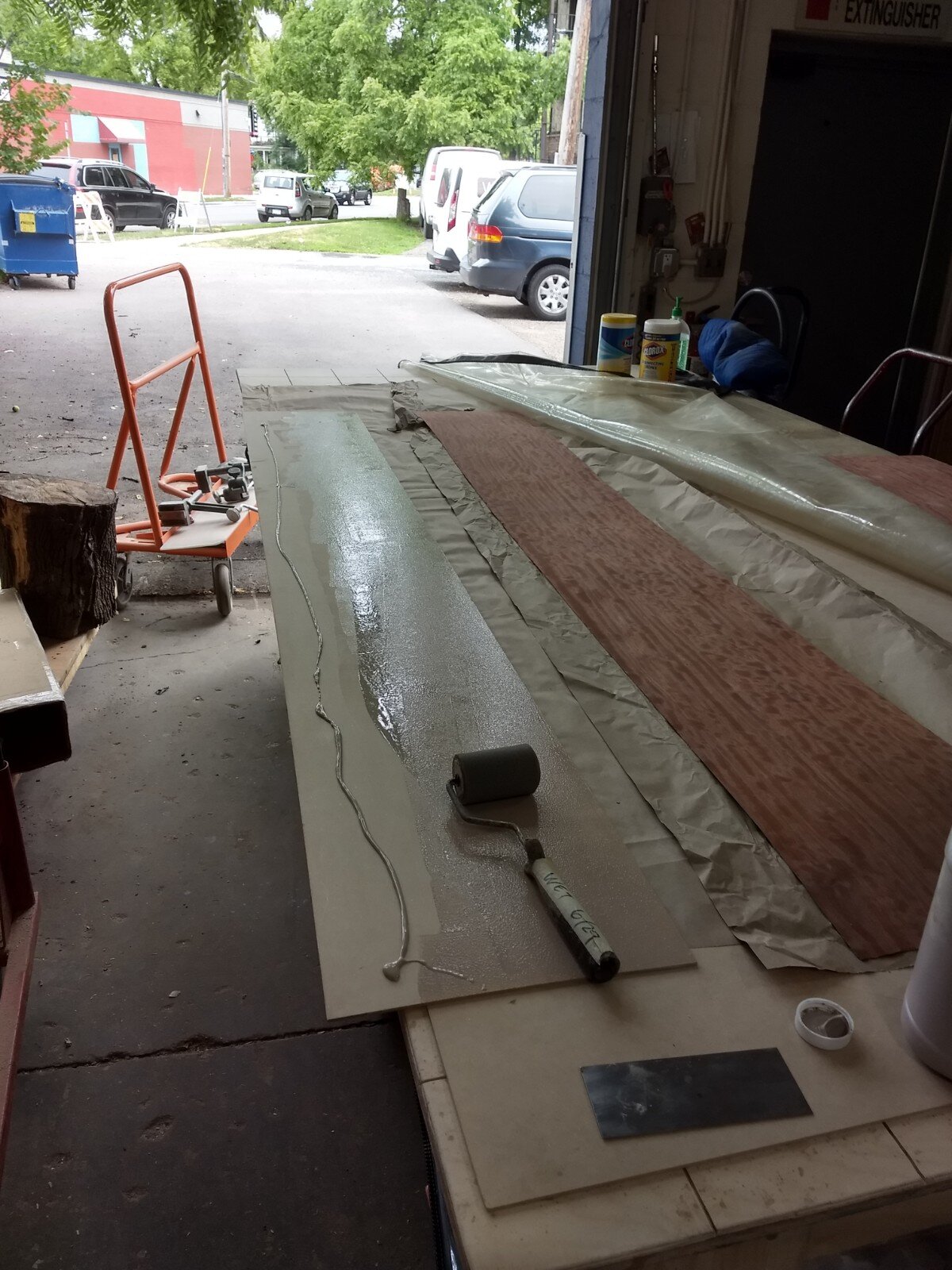Veneering
The function of the tools I use and how they work are explained here. Specific tools used are noted in bold.
The main arch and based are veneered in Quarter Slided Bubinga. Bubinga is native to Equatorial Africa, and is prized in furniture making for its rich color, beautiful grain, and denseness. Bugina trees grow to be thousan year old giants.
Veneer is thin slices of wood. The process of making veneer is fascinating; watch this video for an overview.
To ensure the most uniform face on the arches, the arch face veneer is first glued to a thin piece of MDF (medium density fiberboard) in the vacuum press. The MDF is then glued to the arch in the vacuum press. This MDF provides a smooth and solid substrate for the veneer, and bonds over any gaps or irregularities in the ply grain. The edges of the arch are divided into equal segments, and each segment veneer piece is glued with clamps. The base is veneered in a similar fashion.
A very fine tooth handsaw is used to cut the veneer. The pieces are cut oversize. After applying the veneer, the excess is trimmed off with a flush cut bit in the trim router, with final trimming done with a hand plane and sandpaper.











